Abu Simbel, a testament to the architectural prowess and cultural significance of ancient Egypt, stands as an awe-inspiring marvel that has captivated explorers and travelers alike. This magnificent temple complex, carved into the sheer rock face of a sandstone cliff, is a breathtaking testament to the ingenuity and artistry of the ancient Egyptians.
From its colossal statues to its intricate reliefs, Abu Simbel invites us on a journey through time, unveiling the grandeur of a bygone era. Join us as we delve into the history, architectural wonders, and cultural legacy of this iconic monument.
Historical Significance
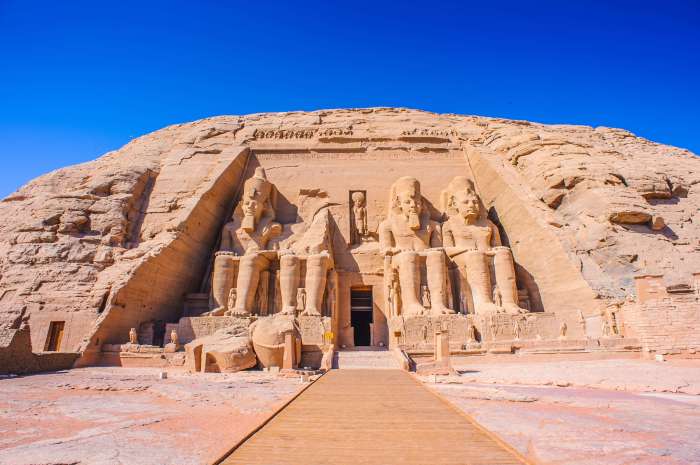
Abu Simbel, an awe-inspiring temple complex located in southern Egypt, holds immense historical significance. Carved out of solid rock during the reign of Pharaoh Ramses II, this architectural marvel was dedicated to the gods Amun-Re, Ra-Horakhty, and Ptah.
To make the most of your trip to Abu Simbel, it’s helpful to create a travel itinerary template. This will ensure you have enough time to explore the temples, learn about their history, and take plenty of photos. Abu Simbel is an incredible sight, and with a little planning, you can make the most of your visit.
Ramses II, renowned for his military prowess and ambitious building projects, commissioned the construction of Abu Simbel as a testament to his power and devotion. The temple served as a symbol of his authority and a lasting legacy of his reign.
Religious and Cultural Significance
Beyond its historical importance, Abu Simbel played a pivotal role in the religious and cultural life of ancient Egypt. The temple was an active center of worship, where priests performed daily rituals and offerings to the gods.
The reliefs and inscriptions adorning the temple walls provide valuable insights into the religious beliefs and practices of the time. They depict scenes of Ramses II triumphing over his enemies, offering sacrifices to the gods, and receiving their blessings.
The temple’s unique location and architectural design were carefully chosen to align with the annual flooding of the Nile River. During the summer solstice, the sun’s rays would illuminate the inner sanctum of the temple, casting a beam of light upon the statues of Ramses II and the gods.
This celestial alignment not only demonstrated the pharaoh’s divine connection but also served as a reminder of the cyclical nature of time and the importance of agriculture in Egyptian society.
Architectural Marvel: Abu Simbel
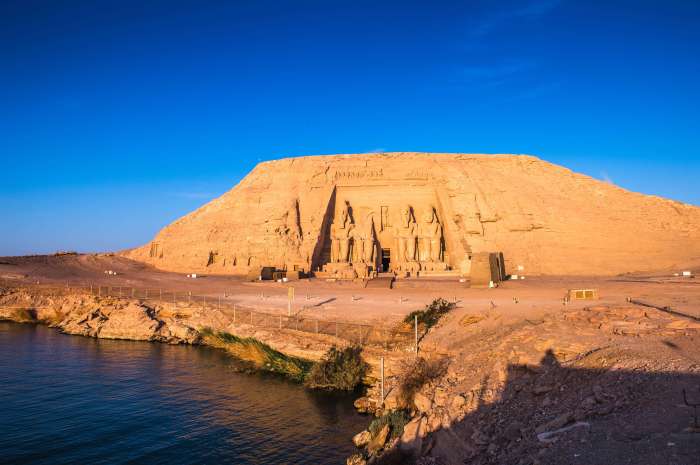
Abu Simbel’s architectural grandeur is unparalleled, showcasing the ingenuity and artistry of ancient Egypt. The temple complex comprises two colossal rock-cut temples, one dedicated to Pharaoh Ramesses II and the other to his queen, Nefertari.
Construction Techniques and Materials
The temples were carved directly into the sandstone cliffs, a testament to the exceptional skill of Egyptian architects. The scale of the construction is awe-inspiring, with the main temple’s facade adorned by four colossal statues of Ramesses II, each measuring over 65 feet in height. The interior features a series of chambers and halls, adorned with intricate reliefs depicting scenes of battles and religious ceremonies.
Colossal Statues and Symbolism
The colossal statues of Ramesses II are not merely decorative elements but profound symbols of power and divinity. They represent the pharaoh’s strength and authority, reinforcing his status as a god-king. The statues are strategically positioned to align with the rising sun on specific dates, casting their gaze over the surrounding landscape. This alignment served both a religious and political purpose, emphasizing Ramesses’ connection to the divine and his control over time.
Relocation and Preservation
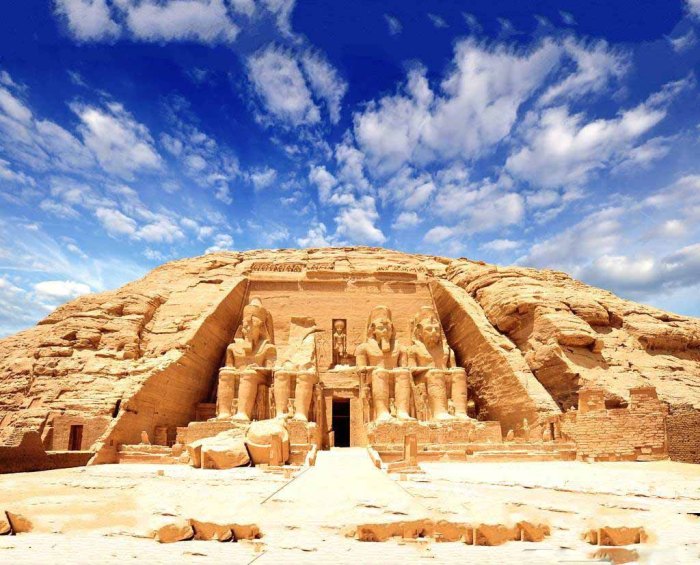
The relocation of Abu Simbel was a colossal undertaking, prompted by the construction of the Aswan High Dam. The rising waters of Lake Nasser threatened to submerge the temple complex, necessitating its relocation to a higher elevation.
Abu Simbel, an architectural marvel of ancient Egypt, offers an immersive experience into its rich history. While exploring this iconic site, consider adopting eco-friendly travel tips to minimize your impact on the environment. By reducing your carbon footprint, you can ensure that future generations can also marvel at the timeless beauty of Abu Simbel.
Challenges of the Relocation Project, Abu simbel
The relocation project, spanning from 1964 to 1968, faced numerous challenges. The colossal size and weight of the temples required innovative engineering solutions. The complex was meticulously dismantled into over 1,000 blocks, each weighing several tons. The blocks were then transported to a new site, 65 meters above its original location.
Preservation Efforts
Extensive efforts were made to preserve the integrity of the temple complex during the relocation. The original site was carefully documented, and each block was precisely numbered and placed in its exact original position. Additionally, the new site was carefully chosen to replicate the original environment as closely as possible, ensuring the preservation of the temple’s orientation and relationship to the sun.
Success of the Project
The relocation project was a remarkable success, preserving the Abu Simbel temples for future generations. The meticulous planning and execution of the project ensured that the complex retained its architectural integrity and cultural significance.
Tourism and Cultural Impact
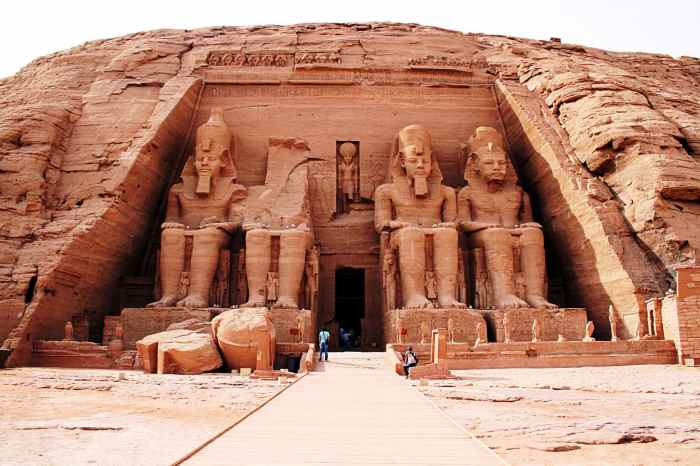
Abu Simbel stands as a beacon of ancient Egyptian civilization, captivating the hearts and minds of travelers from around the globe. Its colossal temples, with their intricate carvings and awe-inspiring statues, have made it a top tourist destination in Egypt.
Economic Benefits
Tourism plays a pivotal role in the local economy. The influx of visitors generates significant revenue for businesses such as hotels, restaurants, and tour operators. Moreover, it creates employment opportunities for the local population, fostering economic growth and development in the region.
Cultural Benefits
Beyond its economic impact, tourism also brings cultural benefits. Visitors from different backgrounds and cultures interact with the local community, promoting cross-cultural exchange and understanding. Abu Simbel serves as a testament to the ingenuity and artistry of ancient Egyptians, inspiring awe and appreciation for their legacy.
After exploring the colossal temples of Abu Simbel, it’s time to switch gears and pack for a relaxing beach getaway. Check out our beach holiday packing list for essential items like swimwear, sunscreen, and a good book. As you bask in the sun, don’t forget the awe-inspiring memories of Abu Simbel’s ancient wonders.
Challenges and Opportunities
While tourism offers numerous benefits, it also presents challenges. Managing the influx of visitors requires careful planning to preserve the site’s integrity and minimize environmental impact. Striking a balance between economic development and cultural preservation is crucial.
Despite these challenges, tourism also presents opportunities for sustainable development. By implementing responsible tourism practices, such as limiting visitor numbers and promoting eco-friendly tours, authorities can ensure the long-term preservation of Abu Simbel while fostering economic growth.
Archaeological Discoveries
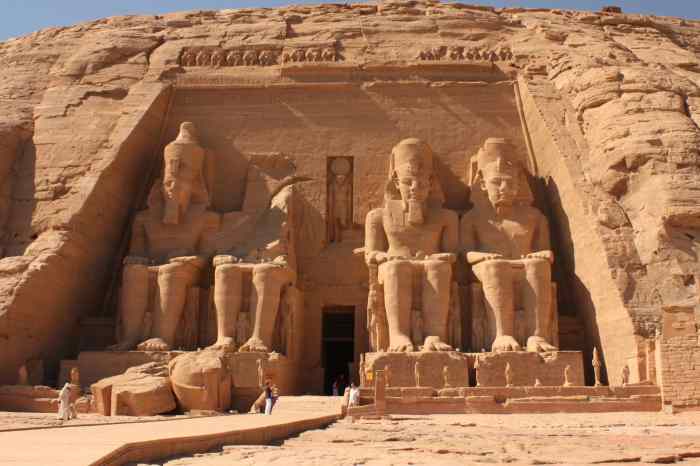
Abu Simbel has yielded a wealth of archaeological discoveries that have significantly contributed to our understanding of ancient Egypt. Excavations at the site have unearthed a vast array of artifacts, inscriptions, and other findings that shed light on the religious beliefs, cultural practices, and historical events of the period.
Artifacts
Among the most notable artifacts discovered at Abu Simbel are a series of colossal statues depicting Ramses II and his family. These statues, carved from a single block of sandstone, stand over 60 feet tall and are considered masterpieces of ancient Egyptian sculpture. Other artifacts found at the site include jewelry, pottery, weapons, and tools, providing valuable insights into the daily lives of the ancient Egyptians.
Inscriptions
The walls of Abu Simbel are adorned with numerous inscriptions that provide historical and religious information. These inscriptions include accounts of Ramses II’s military campaigns, hymns to the gods, and prayers for the pharaoh’s well-being. The inscriptions also contain valuable information about the construction of the temple and the religious ceremonies that were performed there.
Other Findings
In addition to artifacts and inscriptions, excavations at Abu Simbel have also uncovered other significant findings. These include the remains of a settlement that housed the workers who built the temple, as well as evidence of a water filtration system that supplied the temple with fresh water. These discoveries provide a glimpse into the logistics and infrastructure that supported the construction and maintenance of this ancient wonder.
Last Recap
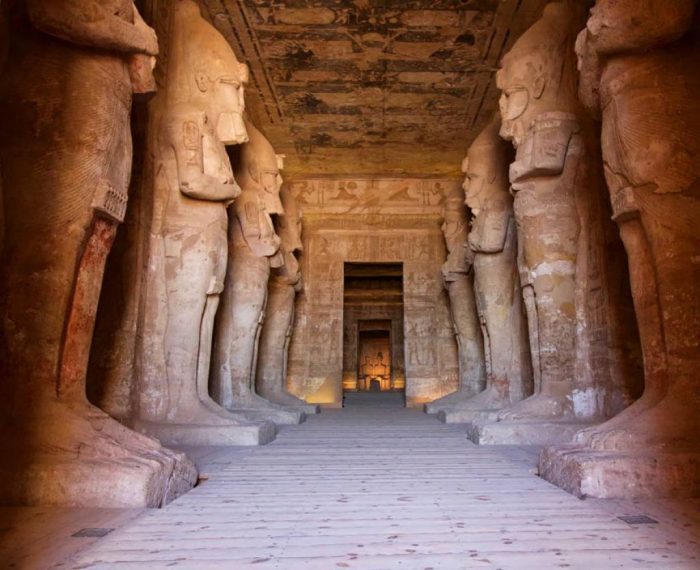
Abu Simbel, with its enduring legacy, continues to inspire and amaze visitors from around the world. As we bid farewell to this architectural marvel, let us carry with us the lessons of history, the appreciation for artistic brilliance, and the boundless possibilities of human endeavor. May the echoes of Abu Simbel forever reverberate in our hearts and minds, reminding us of the indomitable spirit of ancient Egypt.
FAQ Summary
Where is Abu Simbel located?
Abu Simbel is situated on the western bank of Lake Nasser, approximately 230 kilometers southwest of Aswan in southern Egypt.
Who built Abu Simbel?
Abu Simbel was built by Pharaoh Ramesses II during the 19th dynasty of the New Kingdom period (around 1279-1213 BCE).
What is the significance of the colossal statues at Abu Simbel?
The four colossal statues represent Pharaoh Ramesses II and symbolize his power and authority. They are believed to guard the entrance to the temple and protect it from evil.
Why was Abu Simbel relocated?
Abu Simbel was relocated in the 1960s to protect it from the rising waters of Lake Nasser, which was created by the construction of the Aswan High Dam.
What are some of the archaeological discoveries made at Abu Simbel?
Archaeological discoveries at Abu Simbel include inscriptions, statues, and other artifacts that provide valuable insights into the history, culture, and religious beliefs of ancient Egypt.